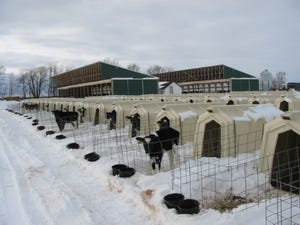Production growth, overseas competition demands transportation investment
Continued profitability in U.S. soybean industry hinging on infrastructure investments.
December 21, 2016

In the aftermath of another historic soybean harvest, U.S. farmers continue to demonstrate their ability to respond to growing demand from domestic and international customers. However, this increased production requires a corresponding increase in transportation capacity to ensure that the industry — and the farmer — remains profitable.
A recent study funded by the soybean checkoff offers a warning that future production increases, along with infrastructure improvements by South American competitors, could suppress the profitability of the U.S. soybean industry.
“Transportation infrastructure gives U.S. farmers a significant competitive advantage over our international competitors, but without investment, we won't enjoy that advantage for long,” said Mark Seib, United Soybean Board director and a soybean farmer from Poseyville, Ind. “We need to focus on investing in our infrastructure now to position ourselves for a competitive and profitable future.”
The study, “Farm to Market — A Soybean's Journey,” is an expansion of the original 2012 report that highlights how soybeans are transported to domestic and international customers. In addition to documenting the volume of total U.S. soybeans transported across the various modes, the report provides transportation profiles of 26 individual states — an expansion from the 17 states featured in the 2012 study — that account for 97% of soybeans transported in the country. The research was funded by the soybean checkoff and performed by Informa Economics.
Some of the key findings of the study include:
Railcar loadings of soybeans will increase 20% to approximately 240,000 railcars by 2023. Barge loadings will increase 32% to more than 21,000.
China, the leading international customer for U.S. soybeans, will continue to import larger volumes. China's annual soybean net imports increased by 24 million metric tons (882 million bu.) from 2006 through 2010 and are expected to increase an additional 74 mmt (2.7 billion bu.) to 126 mmt (4.6 billion bu.) from 2010 through 2023.
Soybean production in Brazil, the second-leading producer worldwide, is expected to exceed 129 mmt (4.7 billion bu.) of soybeans produced by 2023, up from 87 mmt (3.2 billion bu.) in 2013.
Exports of soybeans from Brazil will expand to exceed 74 mmt (2.7 billion bu.) in 2023 from 45 mmt (1.7 billion bu.) in 2013.
Infrastructure improvements in Brazil are estimated to reduce freight costs 20-30%, or $40/mt. Such an improvement would result in Brazil's inland transportation costs becoming nearly equivalent to those in the U.S.
Lower transportation costs have historically served as one of the key competitive advantages for the U.S. soybean industry. While many previously planned infrastructure investments in Brazil have not come to fruition, if even a percentage of such investments are realized, the competitiveness of the U.S. soybean industry will be diminished.
“While it is very difficult to establish a precise forecast for our industry in a very uncertain and turbulent marketplace, it is important to scan the horizon to better understand the potential future demands on our transportation system as well as the efforts by our competitors to improve their efficiency,” explained Mike Steenhoek, executive director of the Soy Transportation Coalition. “The time to plan for infrastructure improvements is before you experience the bottleneck, not after it. Keeping our finger on the pulse of how soybeans get from the farm to our ultimate customers is essential as we promote a transportation system that helps farmers remain profitable.”
In addition to providing a forecast for future production and transportation demand, the report also provides data in the following areas:
Livestock industry status and outlook both nationally and in the 26 featured states;
Rail transportation, including the number of car loadings, average distance moved, leading origination and destination areas and capacity;
Barge transportation, including percentages moved by various rivers, commodities transported, average distances moved per commodity and capacity per barge;
An overview of the current and future state of infrastructure development in Brazil, and
Storage capacity both nationally and in the 26 featured states.
“Great nations, as well as great industries, continue to invest in themselves,” Steenhoek said. “Investing in infrastructure should not be an isolated incident. It needs to be perpetual. By issuing this report, it is our hope that we will increase attention and focus on the importance of investing in our economy and industry to enable us to remain competitive in the 21st century.”
The full results of the study can be accessed at www.soytransportation.org or www.unitedsoybean.org.
You May Also Like

.png?width=300&auto=webp&quality=80&disable=upscale)

